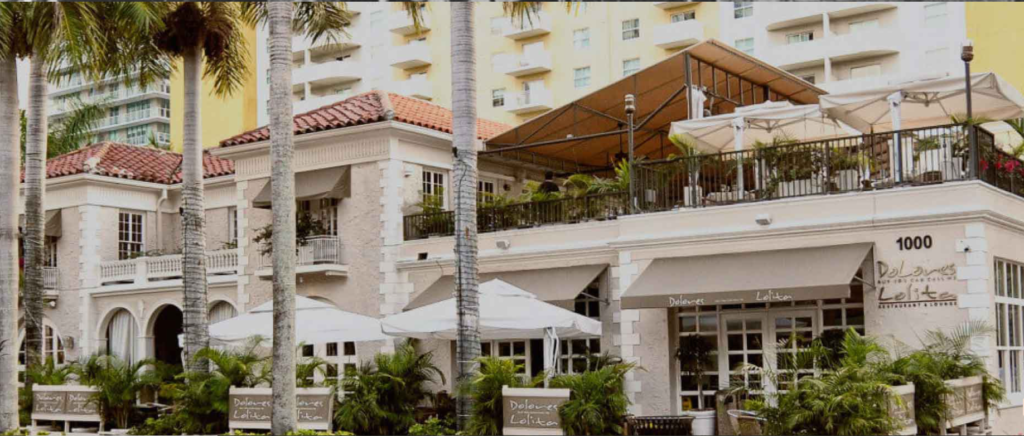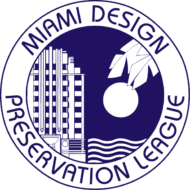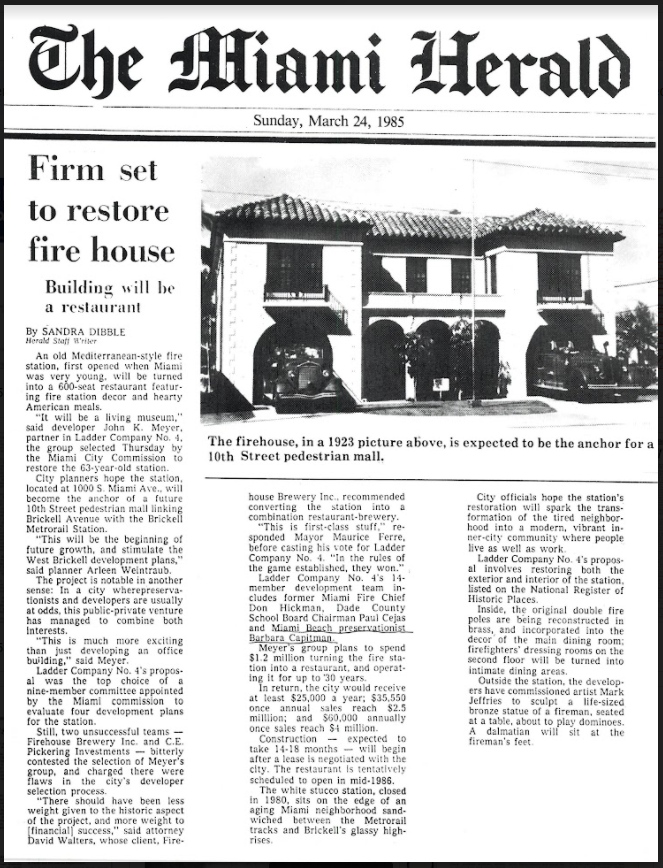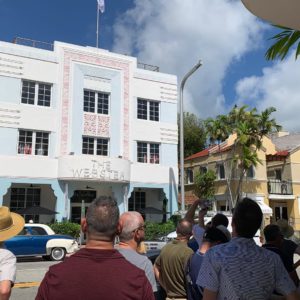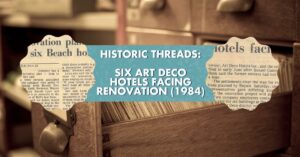At 1000 South Miami Avenue you will find both a turn-of-the-century restaurant and a living museum for the Mediterranean styled Firehouse No. 4, that is listed on the U.S. National Register of Historic Places. The structure was designed in 1923 by H. Hastings Mundy, who also was the architect on the Trinity Espiscopal Cathedral, 464 N.E. 16 Street and the old Miami Herald Building, formerly at 200 S. Miami Avenue. Mundy also designed the Old Homestead City Hall located at 41 North Krome Avenue, which on November 7, 1997, was also added to the U.S. National Register of Historic Places.
Fire Station No. 4 was a fine example of Mediterranean Revival style architecture in Miami, especially noteworthy for its arcaded porch, balconies, and decorative quoins and cornices. When constructed, the main entrance was located in the central bay, with a round arched garage door in each wing. In 1956, these garage doors were altered. The north door was slightly enlarged and changed from a round arch to a rectangular door topped with a plain lintel. The south door was blocked down, filled in with glass block, and also topped with a plain lintel.
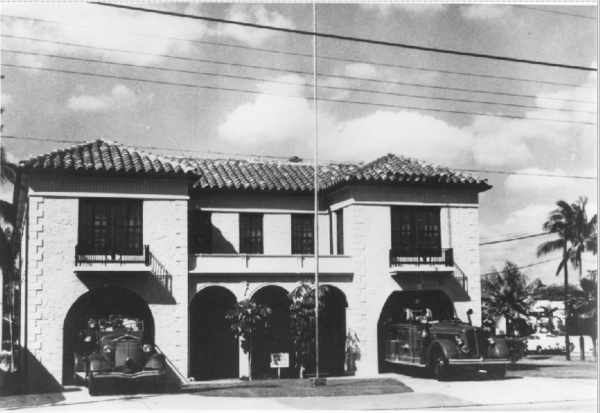
Although the white stucco building was enlarged at two different times during its history, it was finally abandoned by the Fire Department in 1980. It was about to be demolished back in 1981, when preservationists stepped in with the idea to turn it into a restaurant. What made the restoration possible was when city officials put their clout behind the project, combining the interests of preservationists and developers. Ladder Company No. 4’s fourteen member development team included former Miami Fire Chief Don Hickman, Dade County School Board Chairman and Miami Beach preservationist Barbara Baer Capitman.
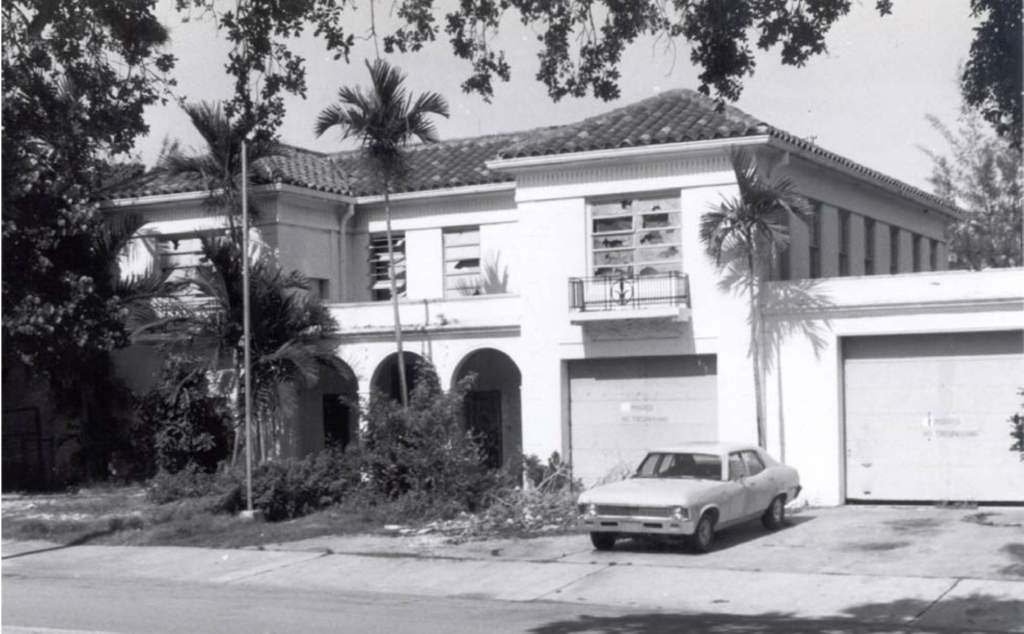
Subsequently listed on the National Register of Historic Places, Ladder Company No. 4 proposed to restore both the exterior and interior of the station. Its front doorway had a three arch portico, its windows on the original chief’s room upstairs opened onto small balconies decorated with ornate wrought iron, and were all restored. The original double fire poles were reconstructed in brass and displayed in the main dining room that was decorated in brass, mahogany, tile and pine. In addition, the firefighter’s dressing rooms were turned into private dining areas.
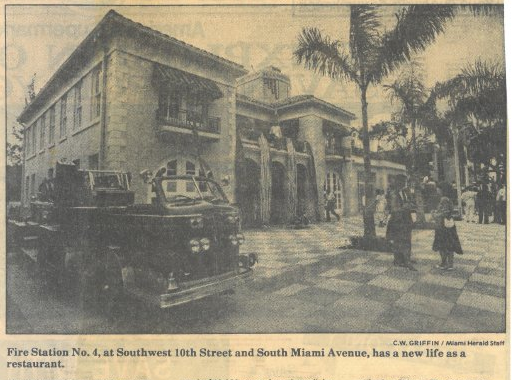
The restaurant opened in July 1988 with the name “Firehouse Four”. Today the name of this eatery is known as “Dolores But You Can Call Me Lolita”.
